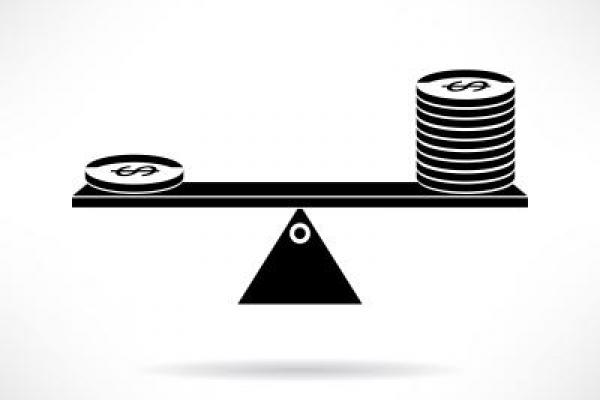Leverage and Margin in Forex
Leverage and margin are the terms each trader starts with. The concept is simple, so even a beginner trader will catch on fast. However, there are pitfalls that may affect traders’ positions if they don’t consider crucial points.
We summed up the useful information that will make your margin trading effective and prevent you from making mistakes that may cost a fortune.
Leverage: Should You Borrow From a Broker?
The term leverage is quite simple and usually doesn’t raise questions in traders’ minds. Simply stated, leverage is a loan that a broker provides to traders so that they can increase their position size. However, you should remember that the loan is not for a precise term. You don’t own borrowed money and cannot use it to purchase an asset.
Leverage is a loan that a broker provides to traders so that they can increase their position size. However, a trader doesn’t own these funds.
Here, we should mention the term lot size. The standard lot size is $100,000. This means that if you want to trade one lot, you need to have $100,000. But what percentage of people have such a vast amount of money? Even if you choose smaller lot sizes – a mini lot of $10,000 or a micro lot of $1,000, odds are you won’t be able to provide the entire amount.
A lot size affects the amount you could earn. A standard lot allows you to earn $10 per pip. If you trade a mini lot, you can make $1 per pip. A micro lot will let you earn $0.1 per pip. So, it’s clear why traders care so much about the lot size.
However, not everyone has even $1,000. That’s why brokers provide investors with a so-called loan. For example, you have $100, but even a micro lot is $1,000. So, a broker offers you 1:10 leverage. As a result, you have $1,000 and can open a position.
Each broker chooses a unique amount of leverage. The smallest one is 1:5. This means that your own money will be multiplied by 5. The largest one is 1:1000. So, your funds will be multiplied by 1,000.
Leverage Trading: How It Works
In common terms, leverage is the borrowed funds a broker provides a trader with. It looks like a bank loan. Nevertheless, it works differently. First, you don't have to pay the money back because you don’t own them. Second, your risks rise significantly. Here, lots of questions appear. Why do brokers provide traders with money if they don’t get it back or don’t get an interest rate? Also, why do the risks grow?
Leverage is accompanied by higher risks.
We are ready to answer these questions. If we talk about a broker's profit, we should understand that every broker gets a commission for every trade you open. So, they benefit from your open positions.
However, leverage is a two-way street. As for risks, you should understand the following rule. Imagine you have $100,000, and you earn $1,000. Here, your leverage equals 1:1, so your profit is 1%. If you have a 1:100 leverage, your profit will amount to 100%. Sounds good, doesn't it?
However, the situation is similar to losses you may suffer. If you have 1:1 leverage, and you lose $1,000, your loss will be -1%. However, trading with a leverage of 100, you will lose 100% of your funds. It’s not so attractive anymore. For this reason, some brokers limit the leverage they offer to their clients. For example, the maximum leverage of Libertex is 1:30 for retail clients and up to 1:600 for professional clients.
What Assets to Trade with Leverage
Leverage is used not only in the Forex market. Traders can use leverage for different assets. For example, derivative investors apply for leverage to open larger trades. Also, you can trade CFD of oil, gold, and stocks via a broker. Here, you can also use leverage. Below you will see a list of the securities that are mostly traded with leverage:
- Currencies. Of course, currencies are the most popular assets for leverage trading. Every reliable broker offers leverage for currency pairs.
- CFD. CFDs are famous among traders because they provide an option to trade such attractive assets as gold, oil, and stocks that provide a significant reward.
- Derivatives.Derivatives are also highly used by traders. Leverage allows them to operate large positions with small expenses or even without them.
Conclusion
To conclude, margin and leverage are basic terms of Forex trading. They allow a trader to open positions no matter what amount of money they have. This option is attractive. However, traders should remember the risks they might face.
To know how to use leverage and margin, you should practice. It’s wise to do it with the small leverages that Libertex provides. The perfect place to practice new techniques risk-free is our demo account.
Why to trade with Libertex?
- access to a demo account free of charge
- technical assistance to the operator 5 days a week, 24 hours a day
- leverage up to 1:500
- operate on a platform for any device: Libertex and Metatrader 4 and 5
- no commissions for extractions in Latin America




